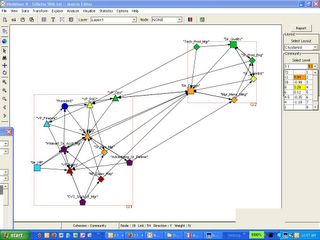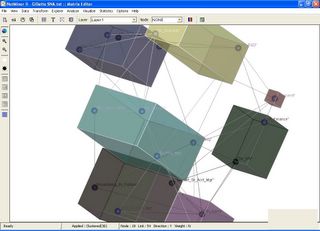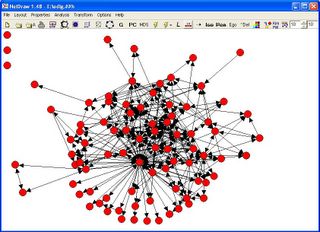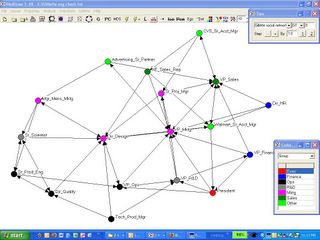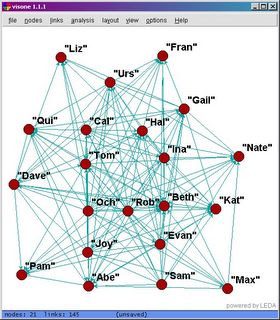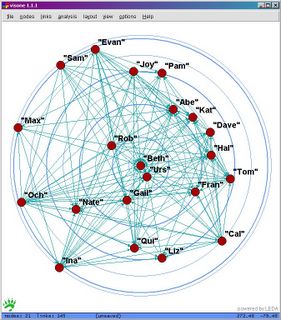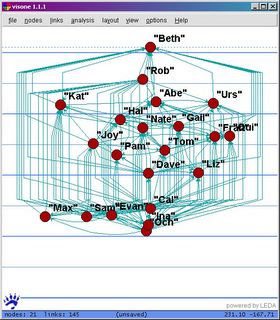Aside from a couple parts that make me cringe* it's a great piece. My favorite part is the explanation of the three kinds of nodes in a social network: (1) hubs, (2) pulse-takers, and (3) gate-keepers. This is not your typical list of SNA archetypes, and the pulse-taker role in particular is one not many people talk about. An organizational pulse-taker cultivates a diverse set of close relationships in order to get maximum insight into the organization with the smallest rolodex. The article presents Stan as a model pulse-taker in the example below:
 Stan is not as well connected as Diane (who is a hub), but Stan gets good visibility into the whole organiazation with less relational overhead than Diane. Sounds like good leadership material to me.
Stan is not as well connected as Diane (who is a hub), but Stan gets good visibility into the whole organiazation with less relational overhead than Diane. Sounds like good leadership material to me.For comparison, many social network analysts talk about brokers (or bridge-spanners), who are quite similar to pulse-takers in having non-redundant contacts. However the idea of a small rolodex of close contacts doesn't occur in your typical discussion of brokers.
Stephenson has founded a company NetForm around her proprietary pulse-taker detecting algorithms. If anyone is interested in this problem, I would love to hear from you. (Did I mention I have a slightly dusty but still usable PhD in network optimization algorithms from Cornell.)
*PS: The part of the article that makes me cringe the most is how it repeatedly describes network science as emerging from the world of particle physics. Where does that leave Euler, who studied networks in 1736. And honestly, there are so many fields with a hand in the creation of this field that it's absurd to single out particle physics, which didn't care about networks until the advent of computer modeling over 200 years later.

